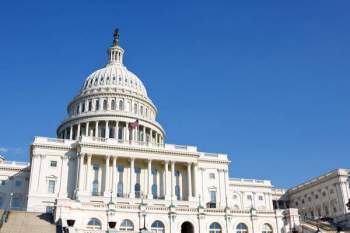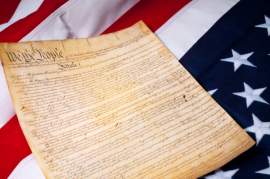
What You Need to Know About The Lack of Governmental Power

Popular In Constitution
Purpose Of Lifetime Appointment And Pros And Cons Enumerated Powers Bicameral Legislature Background Article 3 Of The Constitution We The People 1st Amendment Who Wrote The Constitution Judicial Review Equal Protection Clause Three Fifths Compromise 5th Amendment 10th Amendment
Following the defeat of the British forces in the Revolutionary War in 1776, the United States of America was eager to declare their sovereignty from the monarchy of King George III. Resentment towards a totalitarian governmental body was a sentiment that was shared throughout the nation. The Continental Congress was eager to establish a doctrine that would solidify the United States autonomy as a nation, enlisting the services of political figureheads such as Thomas Jefferson and John Adams to construct such a document. Ratified on July 4th, 1776, the Declaration of Independence not only confirmed the sovereignty of the United States of America, but also outlined a desired governmental model rooted in public servitude rather than absolute power.
Although Thomas Jefferson was credited with primary authorship of the Declaration of Independence, he maintained that many of the ideas that he had implemented in the text of the Declaration of Independence were inspired by fellow political thinker, John Locke. Locke upheld that any central government that retained the right to remove rights from its citizens was innately flawed in its nature. Furthermore, he expressed that a central government must operate under the pretense that its citizens have consented to be governed. As a result, the ruling governing body operates as an entity of servitude rather than totalitarianism.
Jefferson’s idea of an ideal government not only shaped the governmental construct outlined in the Declaration of Independence, but also laid the foundation for a system of checks and balances, further regulating the power of the central government.
A system of checks and balances, which would be further outlined in the Federalist Papers, and later in the Constitution, was a system created to disburse power throughout multiple governmental factions, rather than consolidate power to a single one. As a result, no single gubernatorial entity would be permitted to have more power than any other. Each of the 3 branches of Government, which included the Executive, Legislative, and Judicial branches, were required to work in tandem.
The Declaration of Independence established that a central government was to be elected by the people, and as a result, the role of the Government would be to preserve and protect the interests of its citizens. Since the citizens of the United States would be allowing themselves to be governed, they were entitled to overthrow a government whom they perceived to be tyrannical.
The Declaration of Independence allowed for a central government whose innate ruling power would be dwarfed by the power that its citizens possessed. Since the citizens were allowing themselves to be governed, this assigned fleeting power to any gubernatorial body. Any central government that existed in the United States would be subjected to abolition if its citizens felt that their needs were not being met.
NEXT: Movement towards Constitutional Government





















